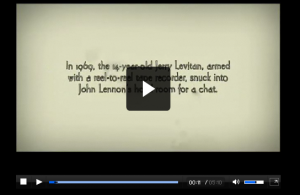“People perceive those that are overconfident to be competent, which in turn gives them power. This irritating effect may clarify a lot about the past decade in American life.” — Jerry Davis, co-director, Interdisciplinary Committee on Organizational Studies, University of Michigan
I was reading this paper today on trait dominance, or the ability of people who exhibit more assertiveness and competence to gain leadership status in their group. Basically, the study finds that people who act competently gain influence over others because they are perceived to be more competent by the group. The researchers also found that this perceived competence may not actually be related to their true competence.
The paper cites ways in which an individual may demonstrate competence to a group, such as their vocabulary or choice of “factual” language, their ability to speak assertively and fluidly, eye contact, and their “relaxed and expansive posture”. Individuals with a higher trait do same attributes, with the addition of suggesting and expressing their opinions more frequently.
The researchers stated: “We do not wish to argue that the core feature of personality dominance is to send a misleading signal of competence to others. Rather, trait dominance might be best defined by its primary social outcome, the establishment of influence in interpersonal settings (Gough et al., 1951; Wiggins, 1979). Individuals higher in trait dominance are perhaps defined by their striving and attainment of control and power in dyads and face-to-face groups.”
The researchers also found that “More assertive individuals might sometimes gain influence above and beyond what their actual competence warrants, and skilled members who are low in trait dominance might be unjustifiably ignored.”
They also stated that the groups may be initially wrong. “Initially, shy individuals were perceived as less intelligent by fellow group members because they spoke less; however, over time shyness was unrelated to peer ratings of intelligence, and, instead, actual intelligence predicted peer-rated intelligence.” Good news for me, I guess, but I suppose I should fake being extroverted more often.
Finally, the researchers suggested that it might be interesting to see if their finding could hold up outside of the experiment, such as what would happen if the study took place over a longer period of time, or if the groups were larger and the organization was more complex.
The study was conducted by Cameron Anderson and Gavin J. Kilduff, of UC Berkeley, and the full title is “Why Do Dominant Personalities Attain Influence In Face-to-Face Groups?: The Competence-Signaling Effects of Trait Dominance.”
